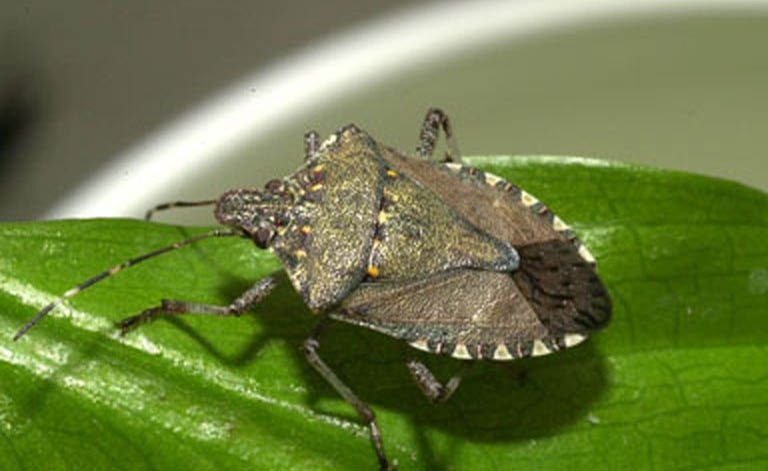
Stink bugs have increased in number and damage as pesticide applications for boll weevils decreased.Identifying which species of stink bug has been responsible for most of the damage to cotton is the goal of a project initiated last year in the Brazos River Bottom.The brown stink bug was the most prevalent species in cotton as well as corn and soybeans.

One unintended consequence of the Texas Boll Weevil Eradication Program has been an increase in other pests, pests that in the past had been controlled by timely—and frequent—treatments for boll weevils.
Stink bugs, for instance, have increased in number and damage as pesticide applications for boll weevils decreased.
“With the eradication program, stink bugs are more of a problem,” said Charles Suh, USDA-ARS entomologist at College Station. “Historically, the stink bug has been considered a minor or occasional pest in cotton in the Brazos River Bottom production area. However, many cotton producers from that area have reported substantial yield losses to stink bug during the past several years.”
Suh, speaking at the Texas Plant Protection Association annual conference held at Bryan in early December, said identifying which species of stink bug has been responsible for most of the damage to cotton is the goal of a project initiated last year in the Brazos River Bottom.
It was not an ideal season to determine stink bug population dynamics, Suh said, but results provide information that will help identify and ultimately develop control strategies for the pest.
“The main objective of the study was to determine which stink bug species commonly infest cotton fields in the BRB. A secondary objective was to determine which crops may be contributing these stink bugs to cotton.”
Researchers evaluated stink bug populations in cotton, corn, milo and soybeans. They sampled fields weekly from initiation of respective growth stages until crops reached maturity or were harvested.
“We identified 10 species of stink bugs,” Suh said. “We found four species—green stink bug, red-shouldered stink bug, brown stink bug and rice stink bug—in each of the four crops.”
The brown stink bug was the most prevalent species in cotton as well as corn and soybeans. The rice stink bug was the most prevalent species in milo.
“Based on first-year results, the brown stink bug will likely be the key stink bug species Brazos Bottom producers will encounter in cotton fields,” Suh said.
He also said stink bugs may be migrating into cotton from corn, soybeans or weed hosts. “Nearby corn and soybeans may be contributing to cotton stink bug numbers.”
He said producers will need organophosphate and pyrethroid insecticides to control stink bug pests.
He also said the physical damage from the stink bug may not be as costly as the boll rot pathogens they carry.
About the Author(s)
You May Also Like





